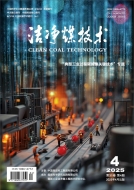Pore structure reformation of tar-derived templated carbons with highvolumetric capacitive properties
 2024 No. 02
2024 No. 02
 705
705 365
365

Citation format:

Authors:
- WU Dongyang
- SUN Fei
- FAN Wei
- WANG Kunfang
- ZHANG Boran
- ZHAO Guangbo

Unit:
- School of Energy Science and Engineering,Harbin Institute of Technology

Abstract:
Among all kinds of energy storage devices,supercapacitors have attracted wide attention because of outstanding characteristicssuch as high power density, ultra-fast charge and discharge speed, and long cycle life. Porous carbon materials are widely used in electrical doubl layer capacitor (EDLC) electrode materials because of their adjustable multi-scale structure, high specific surface area andabundant pore structure. However, the high porosity results in loose carbon skeleton structures, which reduces the material density andfurther limits the volumetric performance of the double-layer capacitor. Therefore, the key to enhance the volumetric performance of double-layer capacitors lies in carbon electrode materials with a rational pore structure and a dense skeleton. In this study, low-cost coal tarwas utilized as the carbon source, and a template method was used to carbonize the different template materials prepared by the phasetransformation process after coated by tar, resulting in carbon nanosheets (PCS) with dense porous structure. The optimized hierarchicalpore structure in the material reduced the proportion of surplus meso- / macropores, resulting in a high packing density of 0.64 g/ cm3 andenabling both excellent gravimetric and volumetric capacitance properties. With an aqueous EDLC as demonstration, the fabricated PCSelectrode can achieve a high-level volumetric capacitance of 277 F/ cm3 at a low mass loading of 2 mg/ cm2 and 243 F/ cm3 at a high massloading of 8 mg/ cm2, with maximum volumetric energy density and power density reaching 8.46 Wh/ L and 10.9 kW/ L, respectively. Inaddition, double-layer symmetric capacitors also exhibited excellent cyclic stability, demonstrating the potential of PCS in high-densityenergy storage in double-layer capacitors.

Keywords:
- coal tar
- template method
- pore structure reformation
- volumetric energy density
- supercapacitor

Citation format:

Chart:

Articles:

-
Executive director
China Coal Science and Industry Group Co., Ltd
-
Sponsored by
Coal Science Research Institute Co., Ltd
Coal Industry Clean Coal Engineering
Technology Research Center -
Editor in Chief
XIE Qiang
-
Vice Editor-in-Chief
YU Chang
SHI Yixiang
ZHAO Yongchun
DUAN Linbo
CAO Jingpei
ZENG Jie -
Publication Frequencies
Monthly
-
ISSN
1006-6772
-
CN
11-3676/TD
Covered by
- CSTPCD
- RCCSE(A+)
- AJ
- EBSCO host
- Ulrichsweb
- JST
- Scopus
Contact us
New Media
-
 Meichuanmei
Meichuanmei -
 Clean Coal Technology
Clean Coal Technology -
 Online Journals
Online Journals














 Submission system
Submission system Copyright agreement
Copyright agreement Instructions for authors
Instructions for authors